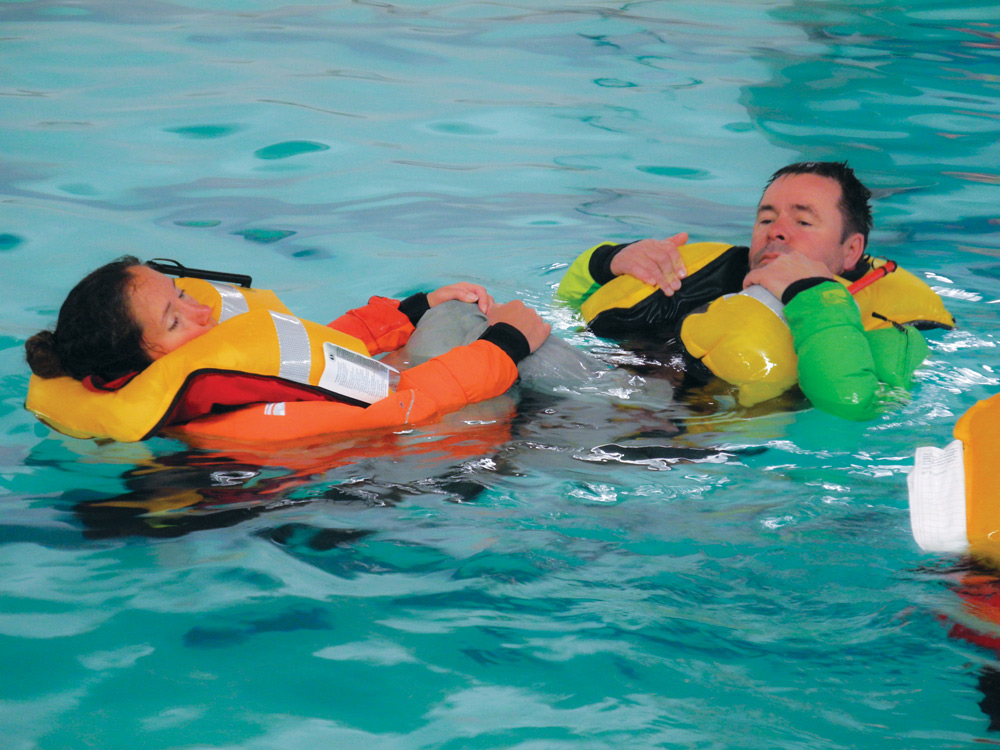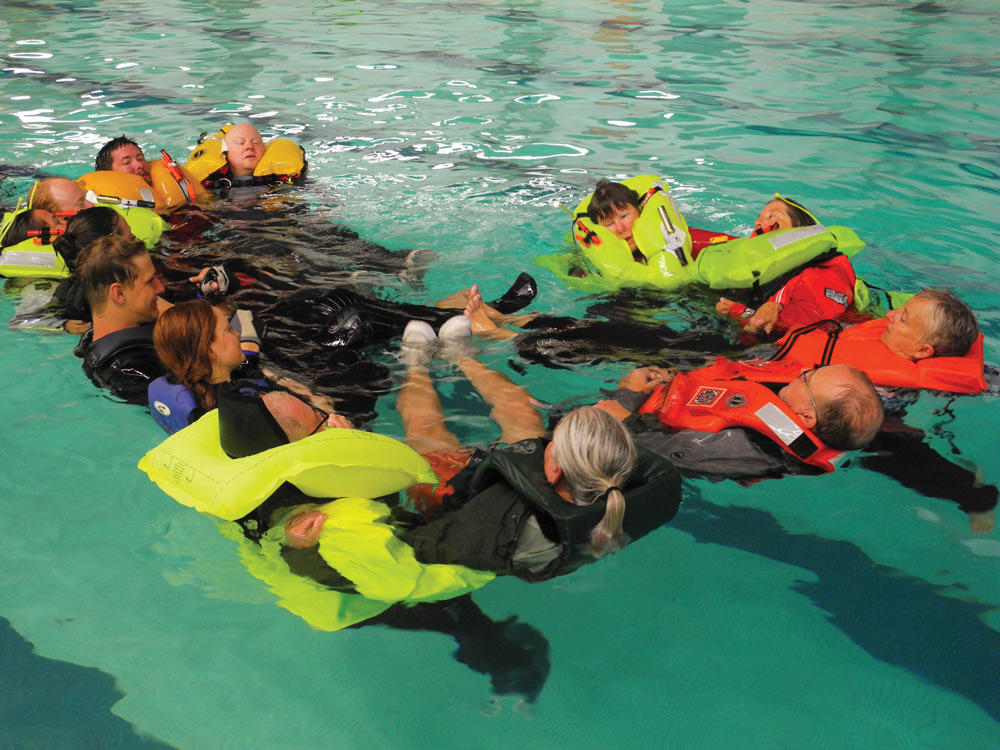Improve your chances for survival when you go overboard
What the person in the water does is just as important as what a boat’s crew does in a man overboard situation
Sailors know that when a person goes overboard the crew must go immediately into recovery mode. Man overboard procedures are studied and practiced. But what happens if you are the person in the water? What can you do to aid your own rescue?
It starts with a life jacket. The buoyancy it provides is the single most significant factor when it comes to survival.

However, when it comes to both life jackets and MOB recovery maneuvers, one size doesn’t fit all. Physical factors such as wind, waves and weather influence MOB rescue outcomes. When a volatile air mass spawns severe thunderstorms or a violent cold front sweeps over those on a mid-summer race or cruise, the risk of an MOB incident increases and chances of recovery decreases. This is why preventing an overboard incident becomes as important as being ready with an effective response.
In cold water, a person in the water (PIW) faces a high-stakes gamble and a well-maintained life jacket can hedge the bet. But gearing up is not enough. To really up the odds of survival, the user of the gear needs to be reflexive and the equipment should be scrupulously maintained according to manufacturer’s recommendations spelled out in the owner’s manual.
Nothing nautical lasts forever, and when it comes to life jackets, the environment takes its toll. Corrosion, delamination, organic deterioration, abrasion and UV damage all conspire to do damage. Regardless of whether you sail in saltwater or freshwater, water is the universal solvent and laminated fabrics along with aluminum alloys and stainless steel parts feel its onslaught.
If you want to extend the life of your inflatable PFD, follow a few simple rules. First of all, take your inflatable home with you when you leave your boat. If spray or rain has soaked the life jacket, open it up and dry it out on a plastic hanger. Store it in a dry, well ventilated place. Keeping the keys to unlock the main hatch or start the engine clipped to the same hanger will remind you to bring it back to the boat.
The U.S. Coast Guard has played a supportive yet cautionary role in the evolution of inflatable PFDs. From the start, it dubbed the device “a manually inflated life jacket with an automatic back up.” The reason for this hesitancy to label them “auto inflating” is their less-than-perfect record in providing immediate auto inflation 100% of the time. The goal is to convince sailors to pull the manual inflation rip cord as soon as buoyancy is needed, regardless of whether or not the device has an auto inflation system. The Coast Guard’s logic is sound. By following the two-pronged approach to inflation, it’s more likely that buoyancy will arrive sooner rather than later.
The Coast Guard likes the idea of a harness and PFD combo, but it also recognizes that there’s a need for training in the usage of such a device. It sees the potential for harness entrapment during a capsize or in the aftermath of a dismasting. Consequently, it has been labeling inflatable life jacket/harness combos a type V PFD, even though their performance may equal or exceed a type I, II or III life jacket with inherent floatation (Kapoc or foam).
There has also been considerable confusion over why identical inflatable life jackets can be placed in different categories solely based upon the type of inflation system used. Much of this is due to the Coast Guard’s legitimate concern over inflation failures due to lack of maintenance. It favors devices that provide single point red/green indicators, showing that they are armed with a charged CO2 cylinder and equipped with a water activation system or as the makers of the Hammar hydrostatic inflator term it, a “submergence” activation system.
The industry has gone through considerable work in redesigning inflators to meet this challenge. When it comes to maintaining your own inflatable life jacket, the first step is to identify the inflator model used in your life jacket. Details about the inflation system are shown on stitched in waterproof sheets or on the inside cover of the life jacket. If the details are missing or unreadable, mark down the make and model of the inflation system and go to the manufacturer’s website. It will have all the technical details and recommended maintenance procedures. Also check for product updates and any information about recalls.
Desirable MOB outcomes are seldom based on a single factor, even if the factor in question is a well-maintained life jacket that’s effectively keeping the victim afloat. Rescue also relies on the boat getting back to the vicinity where the victim went overboard, the actual location of the PIW, successfully maneuvering to make contact and finally bringing the person back aboard. Much of the process is in the hands of the crew left on board or another vessel providing assistance. But there are things that the victim can do to improve the odds of a successful outcome.
The first step when you hit the water in controlling your situation is to inflate your life jacket. Reach for the inflation mechanism even if you think it’s already inflating. Don’t assume it’s going to inflate. Then shout to the crew “Life jacket is inflated; mark my position.” A disturbing trend is how many crews forget the latter along with the need to deploy the MOM or other MOB gear. If it’s dark, the next task for the person in the water is to make sure that their strobe or fixed light is on and if they have an AIS beacon, make sure that the antenna is uncoiled and the unit is transmitting. After these items are checked off, you can adjust the leg or crotch straps so the air bladder is submerged and your head and airway are elevated higher out of the water.
Check to see what may have joined you in the plunge over the side. If the crew was quick to respond and the MOM or other high visibility device was deployed, its attached drogue will slow its wind driven drift. Try to swim—breast stroke usually works best—to the extra flotation and inflated pylon.
If nothing was left astern as your shipmates sailed off, spinnaker wrestling and coping with a boat on the edge of control, you have some time to scan 360. Orient yourself to the disappearing boat in relation to the sun or moon. If the boat disappears from sight, at least you will have a relative bearing as to where it’s likely to return. Scan the horizon for other boats and finally check what’s in your pockets. At night, I usually have a small waterproof LED flashlight and a compact VHF handheld radio in my foul weather gear. Also look for your whistle. All are handy items that improve your signaling capability.

Comments